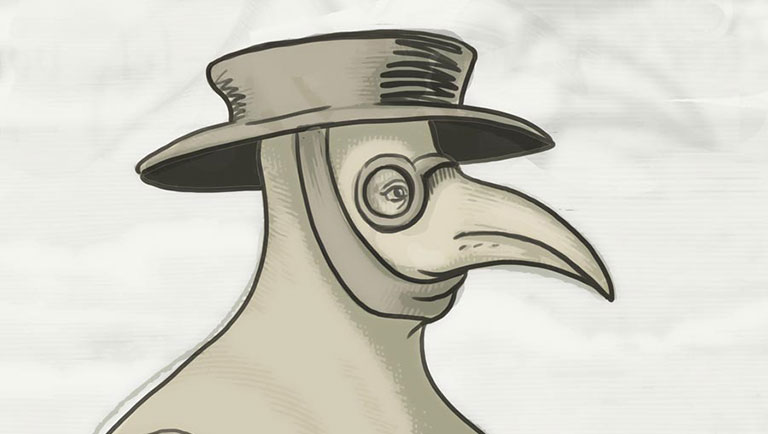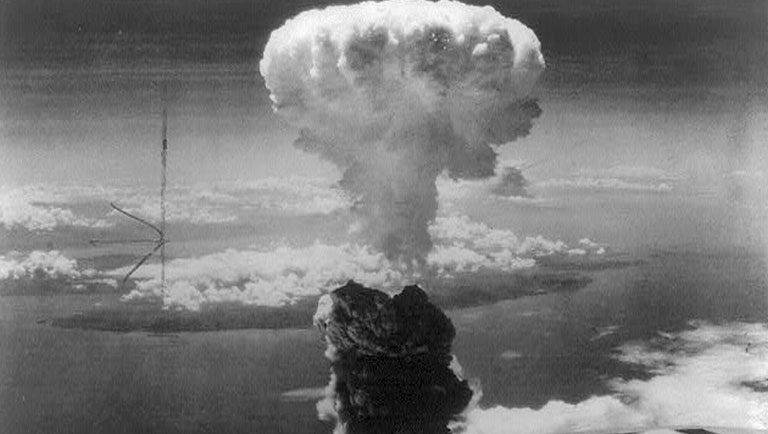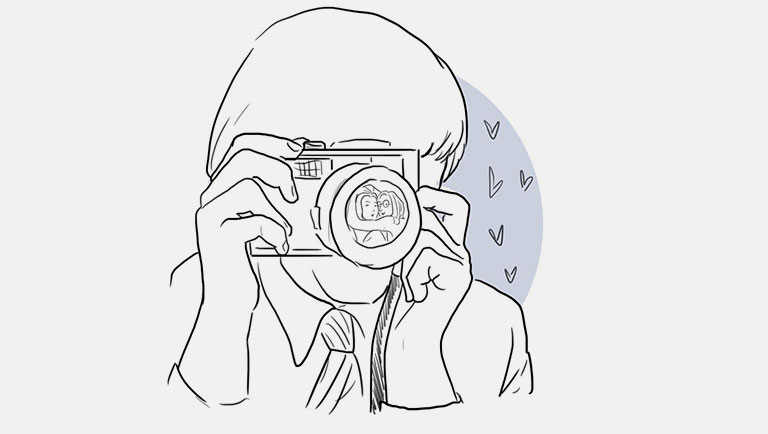Does this mask look familiar to you?

Well, the image refers to a mask that doctors wore when thousands of people were dying in Europe due to the Black Death. The Black Death was the popular name given to the bubonic plague that sailors brought to Europe from Asia in the mid 1300’s. The name referred to the gangrenous blackening and death of body parts of the infected people.
However, it was during the 17th century that the first plague doctors appeared. In that time there were lots of superstitions, and people believed that the pandemic outbreak was a divine punishment. “Plague doctors” were not physicians, but volunteers or very young medicine students without experience. So, they had ancient and medieval beliefs to explain diseases. As a result, while thousands of people were dying, plague doctors claimed that the Black Death corrupted the humor of the person who had it, and they also thought the pestilent plague was spread by air, so they encouraged people to wear those masks.
Something interesting about the masks was that the long beak was holding sweet substances, or even flowers or spices that the plague doctors believed helped people purify their own humors and prevented them from breathing the polluted air.
The plague masks represented the times in which science didn’t rule the theories of diseases origins and treatment. In fact, mysticism played an important and decisive role in medieval beliefs.
Interesting, isn’t it?
To narrate historic events, we need to use past simple and past continuous to mention the situations that happened to a person, nation, or even the entire world.
If you want to write about historic events, you can definitely do it little by little. It’s not necessary to write a complex and long text from the beginning, you can start writing simple sentences, and then use linkers to join them in order to have a more complete and elaborate text.
For example:
You can join all those sentences like this, adding words to spice up the story:
In the first picture, while John Lennon and Yoko Ono were waiting, a maid made their bed. In 1969, they held a protest in bed against Vietnam War. Unsurprisingly, the media covered the protest in Amsterdam while people in Vietnam were dying. As a result, John Lennon and Yoko Ono were filmed during two weeks and the scenes turned into the documentary Bed Peace.
It’s important that you have a good dictionary to look up words you don’t know, or to check the spelling of some difficult ones. On the other hand, grammar is also important, so be careful with that aspect of the language, try to check the sense of your sentences all the time and the correct order of words, also known as syntax. Finally, the use of punctuation is essential if you want to write well!
Let’s try!
Click on the following link to find out more about punctuation rules: https://www.grammarly.com/blog/punctuation/
Does the next image look familiar to you?
Well, it’s about the moments after the atomic bomb hit Hiroshima and Nagashaki back in the 1940’s.
Now, you are going to write about this important historic event!

Unscramble the words to write sentences.
Using the sentences of the previous exercise, organize them to write about World War II. You have the first and the last parts of the paragraph as examples.
After you order the sentences into a more complex text, look at the following chart and tick the things you did in this writing exercise to evaluate your own work. Do not forget that writing is a process and it needs practice, so keep on!
| Yes, I did it! | Oops! No, I didn’t do it! | |
|---|---|---|
| 1. I unscrambled the words to write short sentences paying attention to the correct syntax of the words. |
|
|
| 2. I used a dictionary to check the meaning of some words. |
|
|
| 3. I could identify the clue words that help me order the sentences into a longer text. |
|
|
| 4. Before writing the complete text, I read and reread my work to find the logical order of events. |
|
|
| 5. I checked my grammar, spelling and punctuation before I finished the long paragraph. |
|
|
| 6. My paragraph was very similar to the suggested answer. |
|
|
- Checking my work:
- 5-6 ticks: Well done, you are becoming very good at writing!
- 3-4 ticks: Nice, but you need to work a little harder!
- 1-2 ticks: Oops, you should practice writing much more and follow the tips in this section!






